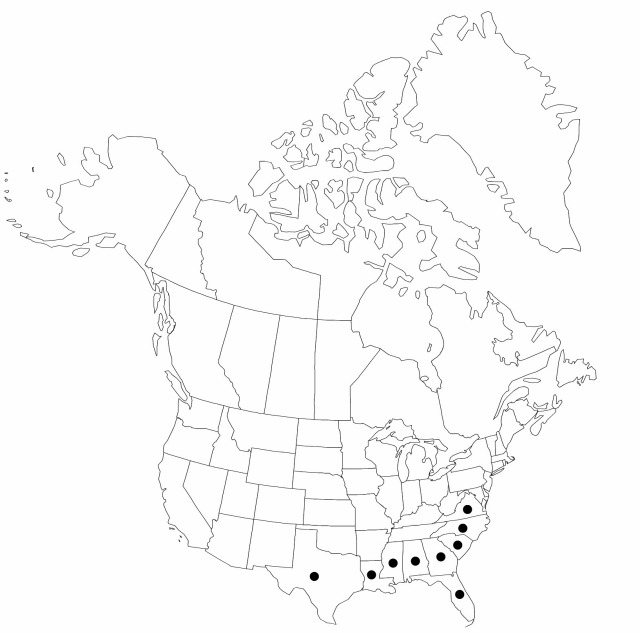Rhynchospora miliacea
Ann. Lyceum Nat. Hist. New York 3: 198. 1835.
Plants perennial, cespitose, to 150 cm; rhizomes stoloniferous, slender. Culms lax, leafy, wandlike, ± terete to obscurely angled, slender. Leaves ascending, exceeded by culms; blades flat, 4–7(–10) mm wide, apex trigonous, shortacuminate, tapering. Inflorescences: spikelet clusters 4–6 or more, equidistant along culm on ascending peduncles, branches capillary, divaricate, clusters loose, diffuse, rounded. Spikelets light brown, ellipsoid to lanceoloid or ovoid, 2.5–3.5 mm, apex acute; fertile scales ovate, (1.5–)2–3 mm, apex rounded or acute, midrib forming apiculus. Flowers: perianth bristles 6, longest exceeding tubercle, antrorsely barbellate. Fruits 2–several per spikelet, 1.3–1.5 mm; body pale brown, broadly obovoid, tumidly biconvex, 1.1–1.2 × 1–1.1 mm; surfaces transversely sharply wavyrugulose, intervals with vertical, rectangular, shallow alveolae; tubercle depressedconic, slightly compressed, 0.2–0.3(–0.4) mm, edges setulose.
Phenology: Fruiting summer–fall.
Habitat: Sandy alluvium of swamp forests and gallery forests, low clearings forests
Elevation: 0–400 m
Distribution

Ala., Fla., Ga., La., Miss., N.C., S.C., Tex., Va., West Indies.
Discussion
The ultimate branches in Rhynchospora miliacea typically terminate in only one or two spikelets, the scales of which fall quickly, and the exposed fruits look like short miniature strings of beads.
Selected References
None.
